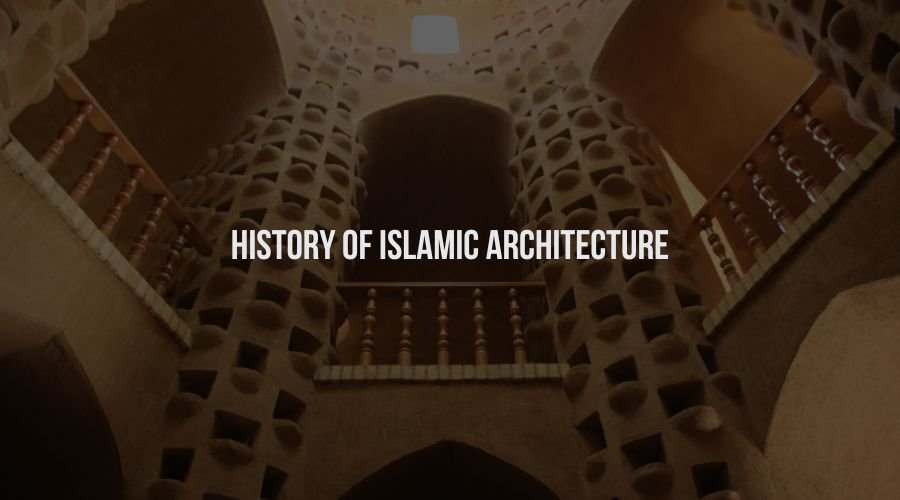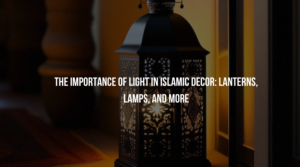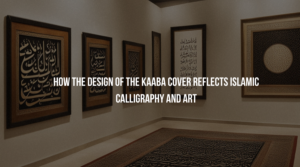From Islam’s inception to the present, a vast variety of secular and religious forms have been incorporated into Islamic architecture. Islam boasts a wide range of unique architectural forms, such as the Mosque, Tomb, Palace, Fort, School, and other urban public buildings.
For major buildings as well as less important ones like public baths, fountains, and residential homes, Islamic architecture created a rich legacy. The following article provides an overview of the key theoretical challenges of Islamic architecture, drawing on significant elements of the tradition’s vast history to provide a succinct explanation of the topic.
What is Islamic Architecture?
Even though this seems like an easy problem at first appearance, scholars have been debating its importance for decades. Domes, arches, and vaults, for instance, are discrete architectural elements that belong under the umbrella term “Islamic Architecture.” It is debatable whether or not Muslims created, constructed, and occupied these buildings. Does this classification only apply to religious systems, or does it also cover non-religious structures that are used on a daily basis?
“Islamic architecture” refers to both secular buildings built by Muslims or used by them in mostly Islamic areas, as well as religious structures used for Muslim worship. The main places where you may find Islamic art and architecture are Muslim-majority countries globally and European states with Arab or Islamic histories, such as Spain and Portugal.
The foundation of Islamic art and architecture, which spans hundreds of years, is the Islamic teachings. The sculptural forms and often spectacular decorative embellishments of Islamic art in Islamic architecture are found in some of the most breathtaking artificial structures all over the world.
Key Elements of Neoclassical Architecture
Apart from its widespread recognition in the US, Neoclassical design had an impact on art across the globe. Builders wanted to steer clear of the ostentatious decoration of Rococo and Baroque forms with their Neoclassical architecture, opting instead for a more restrained interpretation of the architectural style of Classical antiquity.
Porches that were deeply excavated and other structures with parts that protruded and extruded were less common. In the past, bas-reliefs were thinner than they are now and were framed by panels or friezes. The potential of the architectural elements to intensify the effects of light and shadow received less consideration.
Other Distinguishing Features Include
- The vastness and grandeur of Neoclassical buildings are intended to astound onlookers. The floorplans of neoclassical buildings exhibit remarkable symmetry.
- In favour of a simpler design, the architectural elements that were superfluous and impractical were removed.
- Replicating the grandeur of classical Greek and Roman architecture was the aim of Neoclassical architecture.
- The lack of decoration on both the inside and outside of public buildings contributes to their authoritative quality.
- Roofs in neoclassical architecture have horizontal, flat surfaces with domed centres.
- Neoclassical architecture shares the Doric or Ionic order’s tall columns.
- They were built during a certain era, the 1800s, and frequently had gardens with geometric designs surrounding them.
History of Islamic Architecture
The phrase “Islamic architecture” describes a kind of building that emerged in the seventh century as a means for Muslims to express their religious convictions via construction. The structure most frequently connected to this style of architecture is the mosque or Muslim house of worship.
However, this architecture is made up of a variety of buildings, ranging in size from large mosques and fortifications to smaller ones like public baths, homes, and fountains.
Architecture from the Roman, Byzantine, and Persian eras influenced early Islamic structures. Chinese and Mughal architecture, which was prevalent throughout the world, especially in Asia, had an influence on this exquisite construction.
A style of architecture known as Islamic-mosque architecture is seen in several parts of Europe and was developed throughout hundreds of years of dominance by Muslims from North Africa who invaded the Iberian Peninsula and many other Western Mediterranean islands. There are numerous examples of this style throughout Spain. The mid-19th century Renaissance movement included works by Catalan architect Antoni Gaudi, whose designs were greatly influenced by Islamic art and architecture in Spain.
Critical Characteristics of Islamic Architecture
1. Minarets
Towering spires with inside stairs and small windows, minarets look fantastic and play an essential role by calling Muslims for prayers five times a day.
2. Domes
This architecture has domes on the rectangular or square chamber, which are called pendentives that make it easy and feasible to install. These pendentives are commonly crafted with mosaic tiles.
3. Muqarnas Vaulting
Resembling a honeycomb pattern, extensive muqarnas vaulting gives a textured and mono-chronic design to the ceilings of typically elaborating and colourful rooms with colourful tiles.
4. Arches
Ogee-style arches; horseshoe-shaped, pointed, scalloped multifoils. Among the most renowned features of this building are symbolic archetypes. These arches, which stand for splendour, purity, and oneness in the Muslim faith, are essential to a mosque. Older mosques have courtyards encircled by rows of arches and tall minarets. Soon after, the architectural style was changed by adding pillars to the halls.”Religious and non-religious areas were marked with archways.”
5. Ornamental Details
Islamic ornamentation typically consists of multicoloured mosaic tiles with repeating designs and non-figurative geometric or vegetal motifs, such as the arabesque. Moreover, Arabic calligraphy scripts, such as Qur’anic passages, are frequently used.
Mashrabiya, or wood latticework, is another distinctive feature. It is often used in modern settings as a basic aesthetic element or as a means of dividing internal areas, but it is also used on windows for privacy and climate control. The Islamic style also includes exquisite woodwork, wall panels and sculptures made of plaster, and islamic wall art.
6. Outdoor Ornamentation
In general, gardens, enclosed inner courtyards, open hypostyle rooms raised by columns, and vaulting are features found in Islamic art and architecture.




